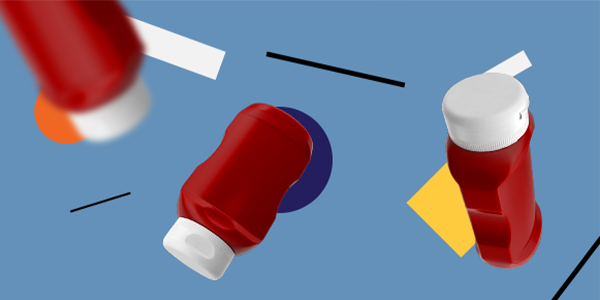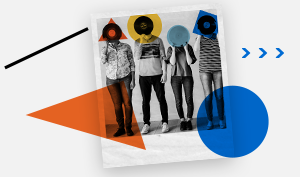Adapted from A Cautious Tale of Market Segmentation: A Behavioral Perspective by Ada Le, Wardah Malik, and Sean Donnelly
The single most popular marketing phrase has to be ‘know your customer’. Whether you have heard it as a college student attending a Marketing 101 course, during a work meeting, or while watching an episode of Mad Men, this phrase rings true, despite the passage of time, because it is a determinate factor to the success of a marketing campaign.
Companies spend thousands of dollars on marketing research, conducting surveys and analyzing market trends. Not to mention the countless hours that are spent honing through piles of demographic and attitudinal survey data on consumer preferences (e.g. what do you like to buy and where do you buy it), in order to create an identifiable consumer persona that will determine the marketing strategy of their product or service.
For instance:
 “Lily, 28 years old, likes to shop at Whole Foods because she is health conscious. She uses her mobile phone for online shopping. Lily also works at a creative marketing agency and enjoys going to brunch with her friends during the weekend”
“Lily, 28 years old, likes to shop at Whole Foods because she is health conscious. She uses her mobile phone for online shopping. Lily also works at a creative marketing agency and enjoys going to brunch with her friends during the weekend”
But a key issue with consumer personas is that they are often two-dimensional. Lily, like many of the consumer personas developed through traditional marketing segmentation, lacks the uniqueness and complexity that characterizes real-life consumers. This is where behavioral segmentation can play a pivotal role.
While traditional market segmentation makes use of demographic, behavioral, and attitudinal data that is largely reliant on stated preferences, behavioral segmentation uses behavioral science to bring about the inner psychological motivations of consumers. Being that people often make decisions, both consciously and unconsciously based on seemingly arbitrary reasons, for example, what their mood was that day or what emotion the color of a brand evoked, understanding these psychological drivers are vitally important. Moreover, a customer’s inner motivations are often abstract and difficult to quantify through standard survey practice because people can’t always readily tell you what they need and what truly influences their behavior, further highlighting the importance of using a behavioral approach to segmentation.
What is Behavioral Segmentation?
At BEworks, our approach to market segmentation starts with behavior. We collect behavioral data and indicators, alongside perception and intention measures, and we use that data to create our segments.
 This approach enables a more precise identification of your target population. Rather than assume that everyone who fits into the same basic category as ‘Lily’, will have the same interests and needs, we cluster people based on the behaviors they take. Once the segments have been created, we can more clearly quantify these segments, test them, and develop behaviorally targeted solutions for each target segment customer.
This approach enables a more precise identification of your target population. Rather than assume that everyone who fits into the same basic category as ‘Lily’, will have the same interests and needs, we cluster people based on the behaviors they take. Once the segments have been created, we can more clearly quantify these segments, test them, and develop behaviorally targeted solutions for each target segment customer.
Ultimately, applying Behavioral Segmentation lets you produce messaging, customer experiences, conversations, and overall strategies that are built for what people actually do.
How do we apply Behavioral Segmentation?
Using behavioral segmentation to increase bill payment with Alectra Utilities.
BEworks helped Alectra Utilities, a Canadian electricity utility and distributor, identify key behavioral segments within their collections stream, and ultimately to optimize the communications for each of those groups.
In studying consumer behavior, BEworks found that some customers were not paying their electricity bills during the winter months when the utility had little recourse to collect on overdue accounts because there was a ban on disconnections. We started by identifying the behavioral characteristics of the customer population and how those characteristics affected bill payment. Using this information, we developed strategic approaches to collections communication to effectively targeted different behavioral segments.
In particular, two key segments were found to be critical in the collections process: customers with a good payment history, and those with recurring collections. The key behavioral barriers to bill payment differed between these two segments and therefore warranted distinct strategies to drive payment on overdue accounts. For instance, we designed two versions of a Reminder Notice: One letter aimed at increasing consistency for customers with a good payment history, and one letter aimed at increasing urgency for recurrent collections customers, through behaviorally informed techniques.
 Designing strategies around psychological or behavioral components of customer behavior translates to a greater likelihood of achieving the desired response and testing these strategies makes it certain that they will be effective before expending resources on a marketplace launch. Indeed, in our other work in the collections space, our large scale field experiments show that behaviorally informed communications can outperform the control by up to 22% in getting people to pay.
Designing strategies around psychological or behavioral components of customer behavior translates to a greater likelihood of achieving the desired response and testing these strategies makes it certain that they will be effective before expending resources on a marketplace launch. Indeed, in our other work in the collections space, our large scale field experiments show that behaviorally informed communications can outperform the control by up to 22% in getting people to pay.
Read the full guide here
Download a questionnaire to get started with behavioral segmentation here










